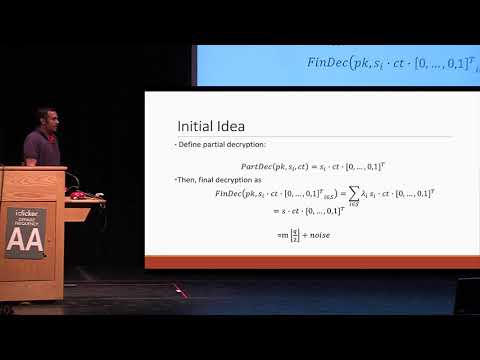CryptoDB
Threshold Cryptosystems from Threshold Fully Homomorphic Encryption
| Authors: | |
|---|---|
| Download: |
|
| Presentation: | Slides |
| Conference: | CRYPTO 2018 |
| Abstract: | We develop a general approach to adding a threshold functionality to a large class of (non-threshold) cryptographic schemes. A threshold functionality enables a secret key to be split into a number of shares, so that only a threshold of parties can use the key, without reconstructing the key. We begin by constructing a threshold fully-homomorphic encryption scheme (ThFHE) from the learning with errors (LWE) problem. We next introduce a new concept, called a universal thresholdizer, from which many threshold systems are possible. We show how to construct a universal thresholdizer from our ThFHE. A universal thresholdizer can be used to add threshold functionality to many systems, such as CCA-secure public-key encryption (PKE), signature schemes, pseudorandom functions, and others primitives. In particular, by applying this paradigm to a (non-threshold) lattice signature system, we obtain the first single-round threshold signature scheme from LWE. |
Video from CRYPTO 2018
BibTeX
@inproceedings{crypto-2018-28851,
title={Threshold Cryptosystems from Threshold Fully Homomorphic Encryption},
booktitle={Advances in Cryptology – CRYPTO 2018},
series={Lecture Notes in Computer Science},
publisher={Springer},
volume={10991},
pages={565-596},
doi={10.1007/978-3-319-96884-1_19},
author={Dan Boneh and Rosario Gennaro and Steven Goldfeder and Aayush Jain and Sam Kim and Peter M. R. Rasmussen and Amit Sahai},
year=2018
}

